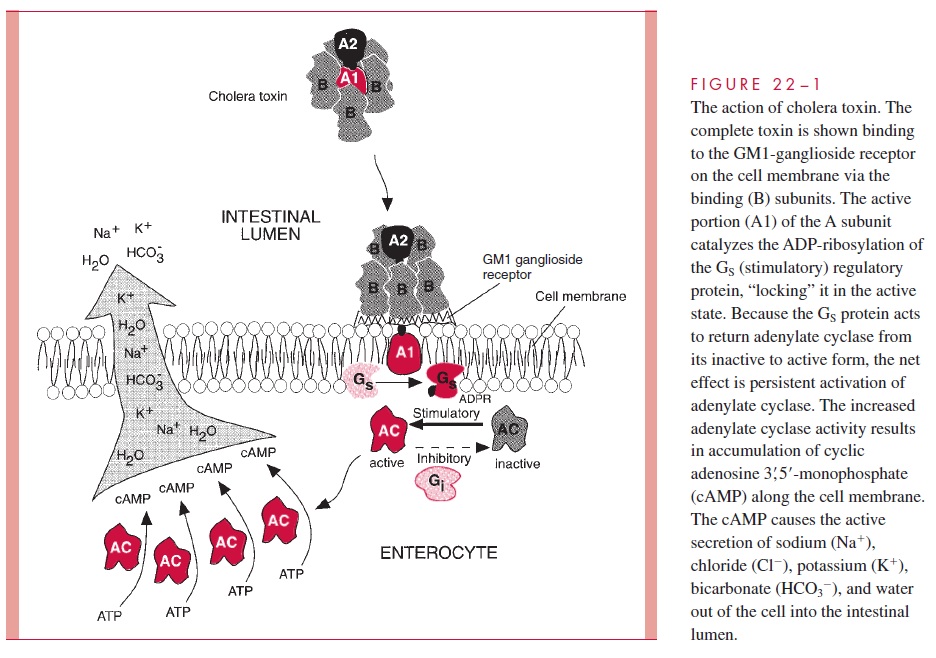Chapter: Medical Microbiology: An Introduction to Infectious Diseases: Vibrio, Campylobacter, and Helicobacter
Vibrio cholerae - Bacteriology
Vibrio cholerae
BACTERIOLOGY
GROWTH AND STRUCTURE
V. cholerae has a low tolerance for acid, but grows under alkaline (pH 8.0 to 9.5) conditions that inhibit many other Gram-negative bacteria. It is distinguished from other vibrios by its biochemical reactions, lipopolysaccharide (LPS) O antigenic structure, and production of cholera toxin (CT). There are over 150 O antigen serotypes, only two of which (O1 and O139) cause cholera. An O1 variant, V. cholerae biogroup El Tor is dis-tinguished by biochemical reactions.
O139 strains resemble O1 El Tor strains but pos-sess a unique O antigen and have a polysaccharide capsule. V. cholerae possess long filamentous pili that form bundles on the bacterial surface and belong to a family of pili whose chemical structure is similar to those of the gonococcus, and a number of other bacterial pathogens. All strains capable of causing cholera produce a colonizing factor known as the toxin-coregulated pilus (TCP) because its expression is regulated together with CT.
CHOLERA TOXIN
The structure and mechanism of action of CT has been studied extensively (Fig 22 – 1). CT is an A-B type ADP-ribosylating toxin. Its molecule is an aggregate of multiple polypeptide chains organized into two toxic subunits (A1, A2) and five binding (B) units. The B units bind to a GM1-ganglioside receptor found on the surface of many types of cells. Once bound, the A1 subunit is released from the toxin molecule by reduction of the disulfide bond that binds it to the A2 subunit, and it enters the cell by translocation. In the cell, it exerts its effect on the membrane-associated adenylate cyclase system at the baso- lateral membrane surface. The target of the toxic A1 subunit is a guanine nucleotide (G) protein, Gs , that regulates activation of the adenylate cyclase system. CT catalyzes the ADP ribosylation of the G protein, rendering it unable to dissociate from the active adenylate cyclase complex. This causes persistent activation of intracellular adenylate cyclase, which in turn stimulates the conversion of adenosine triphosphate to cyclic adenosine 3’ , 5’ -monophosphate (cAMP). The net effect is excessive accumulation of cAMP at the cell membrane, which causes hypersecretion of chloride, potassium, bicar- bonate, and associated water molecules out of the cell. Strains of V. cholerae other than the two epidemic serotypes may or may not produce CT.

Related Topics